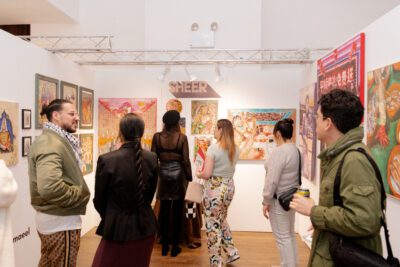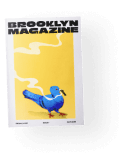Turbans & Tolerance: The Sikh Project
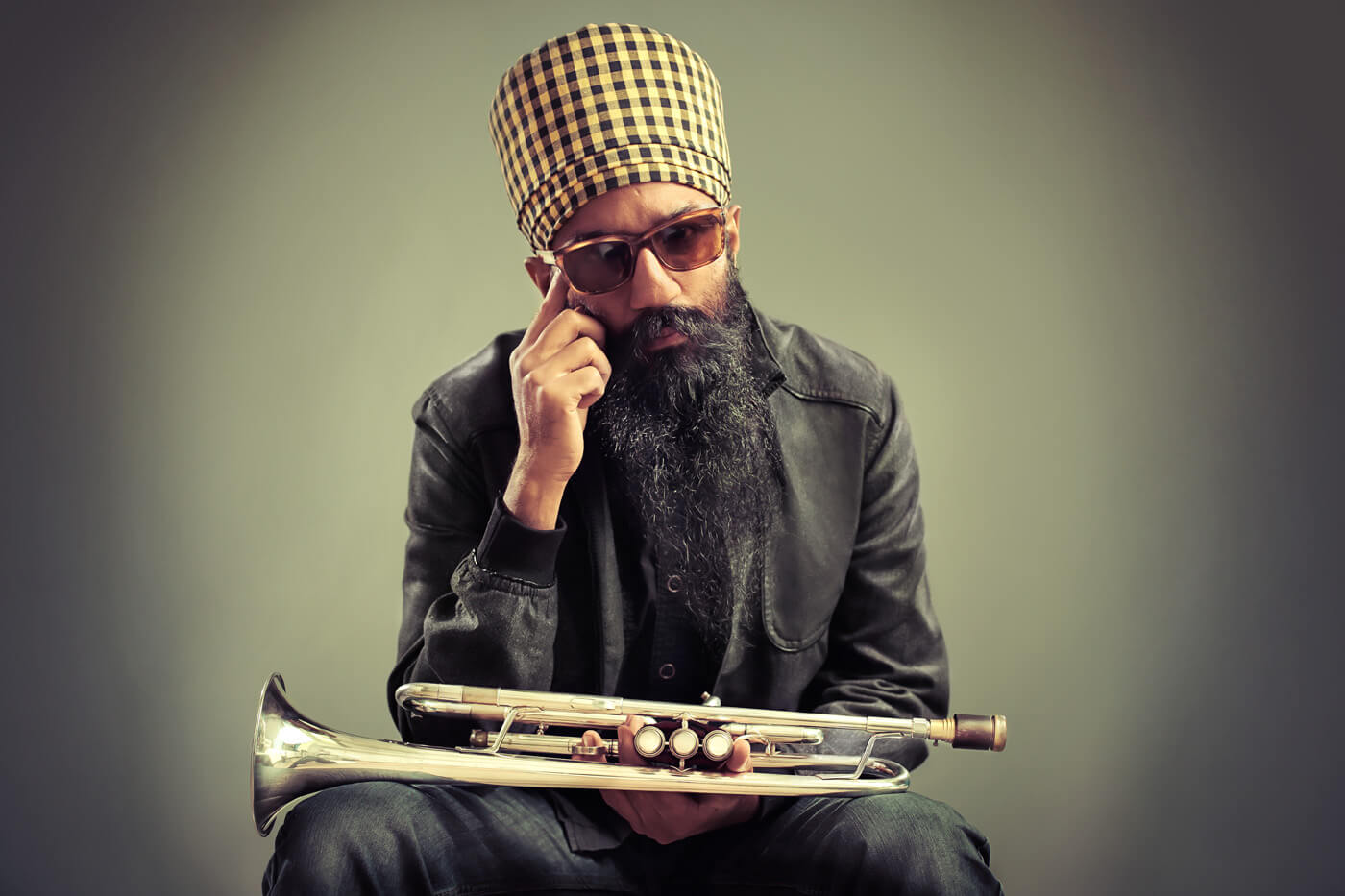
Coming soon to the exhibition spaces of the Sikh Coalition in downtown Manhattan is The Sikh Project, a portrait show and sociocultural essay of sorts by British photographers Amit and Naroop. It’s a follow-up to their very successful, similarly conceived UK show, The Singh Project, which featured portraits of Sikh men from all walks of life to foster greater awareness of the broad and variegated presence of Sikhs in society, and to teach viewers a thing or two about the history and meaning of the beards and turbans worn by the faith’s followers.
This second iteration of the project, reconceived to some extent for American audiences, will feature 40 portraits of male and female Sikhs alike whose array of personal narratives, professional profiles and variably heroic histories are likely to challenge many viewers’ possible stereotypes of Sikhs in general. The Sikh Project will also serve as an anniversary marker for the Sikh Coalition, an important NYC institution that was founded in the wake of the 9/11 attacks, as a response to the violence and vitriol directed at Sikh Americans at the time.
To provide a deeper sense of the origins and scope of The Sikh Project, here are some brief interviews I conducted with Sapreet Kaur, Executive Director of the Sikh Coalition; the photographers Amit and Naroop; Harpreet Kaur, Producer at Maryland Public Television and founder of socially engaged media outlet Sach Productions; and Sonny Singh, a Brooklyn-based musician and community organizer.


Sapreet Kaur
Please tell our readers about about the Sikh Coalition—when and why it was founded, and the nature of its mission.
The Sikh Coalition is a community-based organization that works towards the realization of civil and human rights for all people. In particular, we work towards a world where Sikhs may freely practice and enjoy their faith while fostering strong relations with their local communities. We pursue our mission through direct legal services, law and policy advocacy, education and community engagement. We were founded in the immediate aftermath of September 11, 2001, in response to violent hate backlash against Sikh Americans following the attacks.
Given your role with the Coalition, how do you envision its future?
The Sikh Coalition will continue to work toward a world in which Sikhs and all Americans may freely and fearlessly practice their faith. We will continue to address the root causes and challenges Sikh Americans face, while remaining steadfast in our education of Sikhism to the American public. For example, Sikhism is the world’s 5th largest world religion and Sikhs have been part of the fabric of this country for over 125 years, but it is either omitted or taught inaccurately in many of our schools. We will ensure the accurate inclusion of Sikhism and Sikh history in school curriculums across the country.
Amit and Naroop have clearly delved into themes and interests very dear to the Coalition. What made you decide to bring their project to New York?
As we commemorate the 15th anniversary for our organization and reflect on the Sikh American experience 15 years after September 11, 2001, particularly during this period of heightened divisive rhetoric and hate backlash, we feel that the moment is right to highlight the beauty of the Sikh faith and the strength of our collective spirit, and to do so in a way that further educates the broader American public. We decided to partner with Amit and Naroop because they are amazingly talented, and because of their stunning work on their UK-based Singh Project. Our aspiration is to spark conversations across the country about what it means to look like an American, and to humanize communities who are too often regarded as ‘other.’ There is no better means of opening hearts and minds than through the arts.
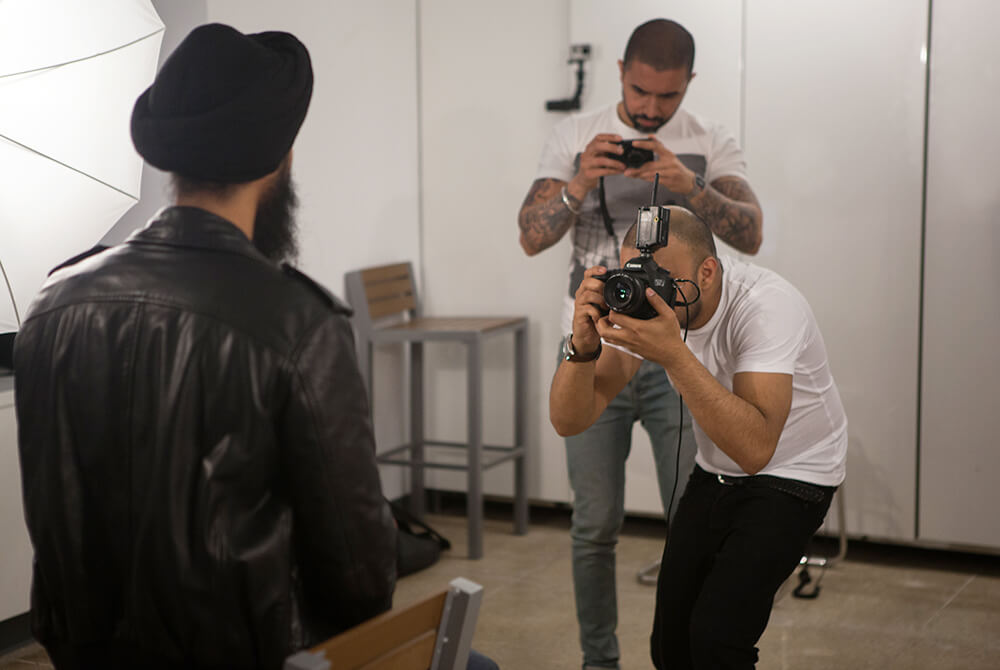

Amit and Naroop
You’ve collaborated on a broad range of fine art and commercial photography projects. Is there a precedent among your works for a project like the Singh Project, i.e. one that merges a thematic and aesthetic approach with a kind of desire to spread awareness of an issue of sociopolitical import?
When we do personal projects, we like to explore ideas, things that interest us or are related to us in some way. As photographers, projects are the only way people can get to know more about you. Commissioned work is someone else’s idea and brief, and isn’t always a true reflection of the photographer. Imagery has always been one of the most striking ways to capture people and spread a message. That is what we try to do—put work out there that can illuminate a subculture, and then give it our stylistic stamp.
What was the initial impetus for the Singh Project? How did you feel about its reception in Britain and abroad?
The initial impetus was the sudden popularity of the beard as fashion statement. In London, men of different ages and backgrounds were growing long beards as part of their identity. Being Sikh photographers, we found this interesting. The beard has always played a role in the identity of a Sikh man, but they don’t keep it for fashion. We decided to develop a project around the Sikh men and the varying styles of their beards, and also their turbans. In the UK, the reception was fantastic. We held four exhibitions in the year we released the images, and we still get requests to show the exhibition. Abroad, people seemed to really connect with the themes of the project: identity, pride, unity. We raised money via Kickstarter, and most of the funds were received from abroad, which was very interesting.
The version of the project for the Sikh Coalition in New York is called the Sikh Project. What else changed about it besides the adjustment in the name? How do you foresee its reception here?
The name changed because we have included women in the U.S version of the project. Singh refers to Sikh men. It is the last name given to every Sikh man, but now has been adopted either as last name or middle name. Likewise, Sikh women use the middle or last name Kaur. So we changed the title to Sikh, to include women too. The Singh Project featured British men. The Sikh Project features American Sikhs. Those are the two differences. I think the reception will be great. It will be portrayed more as an education piece of work, we feel, as the awareness of the Sikh identity in the U.S is still quite limited. But we’re hoping that people will be enlightened, not only about the Sikh identity, but also about their own identity and what it means to them.
Any forthcoming projects you’d like to share with our readers?
Yes, we’re currently working on a project called People Who Play. It is based on Costume Play or Cosplay, where people dress up as their heros and idols. We photographed seventy people at a Comic Con event in May this year and will be photographing more people this October. The idea is to explore the people behind the costumes and what makes them dress up. It’s really interesting! We’ll be putting out a book of the project next year. You can see some of the images here.
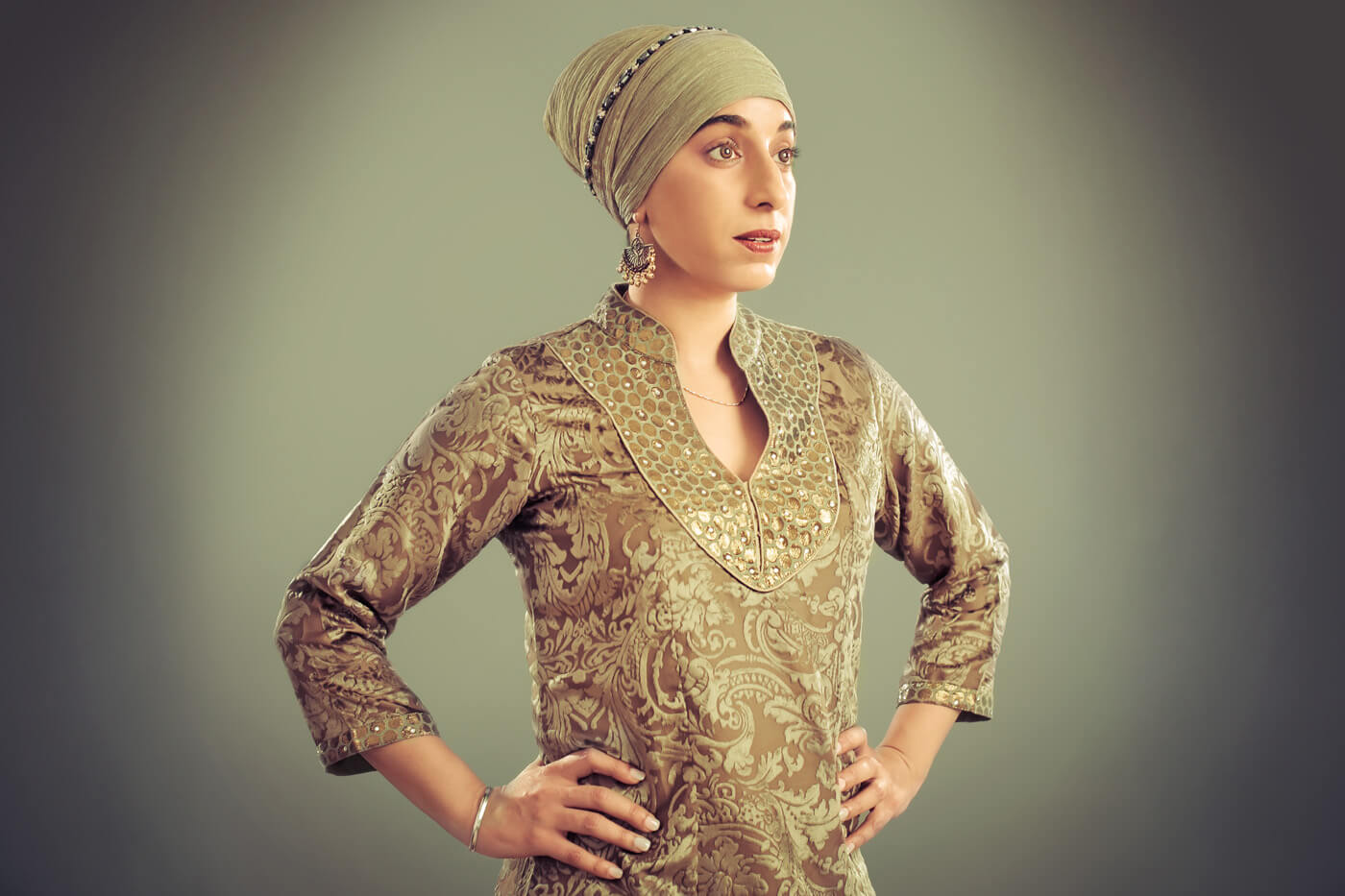

Harpreet Kaur
Your work with Maryland Public Television and Sach Productions dovetails very well with the aims of the Sikh Project. Were you aware of it before getting involved? How does it feel to now be a subject in the kind of project in which you’d often be on the other side of the camera, so to speak?
The Sikh Project is a beautiful artistic canvas which showcases the individuality of turbaned Sikh Americans. I was shortlisted to be a part of this creative collaboration spearheaded by The Sikh Coalition and the talented photographers. I was aware of The Singh Project which was launched in UK, so it was exciting to know that I would have the opportunity to participate in the US version. This wasn’t my first time being photographed or being on camera, but it felt different because of the scope of the project. This wasn’t just any photo shoot; this was going to be a visual illustration of myself along with fellow turbaned Sikhs representing what it means to be an American. My picture is being shared on a platform with prominent Sikh personalities to make the statement, “We are all American.”
Spreading awareness of issues pertaining to minority groups is a vicissitudinous endeavor, to say the least. Do you feel we’re faring better or worse as a society, in terms of acceptance or tolerance?
My religion, culture, language, turban and unique identity are what make me American. That’s what this country is all about. America is a melting pot, and in this beautiful, diverse society, of course there are bound to be differences which can lead to intolerance and bigotry. That’s something I don’t think will ever be eradicated, but each individual can take ownership to educate the public. There are peaks and valleys in terms of acceptance, and global events have a huge impact. Despite the challenges we’re faced with, I believe we’re coming together as a society. People are working to better understand, appreciate and embrace their differences. Love is the solution, the answer, and the calling of today’s time. That’s why The Sikh Project is such an important piece of work. The images artistically capture the diversity of the American cultural fabric. I say, “Art over argument.”
Any forthcoming projects you’d like to tell us about?
Sach Productions is a leading media source that specializes in creating films on contemporary cultural, political, religious and economic issues relating to South Asia. We focus on issues not commonly addressed in mainstream media, while trying to bring balanced perspectives on contentious issues. Our next endeavor is a narrative feature film. For more information on Sach Productions please visit www.SachProductions.org.

Sonny Singh
The Sikh Coalition was founded with the hopes of educating the public about Sikh culture not only to spread awareness, but also to prevent persecution or discrimination. What has been your experience with such treatment? Have relations improved, especially in New York?
I’ve been living in New York City since 2003, and I’ve regularly experienced verbal harassment in my daily life. It used to be people saying things like “Osama,” and “al-Qaeda,” and now it’s more often references to ISIS. Sometimes it comes in the form of a joke, sometimes in the form of threats. Back in 2005 someone pulled my turban off on the F train in Brooklyn. I’d also add that I’ve had more than a few negative experiences being targeted or harassed by the NYPD, one of which led to spending the night in jail at the 92nd precinct in Greenpoint, where the commanding officer forced me to take off my turban—one of the more humiliating and enraging experiences I’ve had in my life. It’s hard to say whether anti-Sikh bigotry has decreased. The last few months, I feel like I get targeted less often, which may or may not be reflective of any broader trend. Clearly, anti-Muslim racism is on the rise, and we hear about attacks on Muslims and mosques all too often. I consider the climate, the policies, and the rhetoric that leads to the vilification of Muslims very much a Sikh issue as well. We’re in this fight against Islamophobia and racism together.
What was it like to work with the photographers? How did you get involved?
Amit and Naroop were very easy and fun to work with. More than anything, I think they wanted to capture who I really am. I was asked by the Sikh Coalition to be photographed. I’ve had a relationship with them for a long time, including being a former staff member, so I was happy to be a part of it.
You’re going on tour with your band soon. Tell our readers about that, too.
Red Baraat is a Brooklyn-based bhangra brass band that is bouncing all over the country this summer and fall. We’re about to do a west coast tour from August 23-27, hitting up Seattle, Portland, San Francisco, Santa Cruz and other spots. Then we’ll be continuing in the midwest after Labor Day in Minneapolis, Detroit, Chicago, and more. You can check out all the dates at www.redbaraat.com.
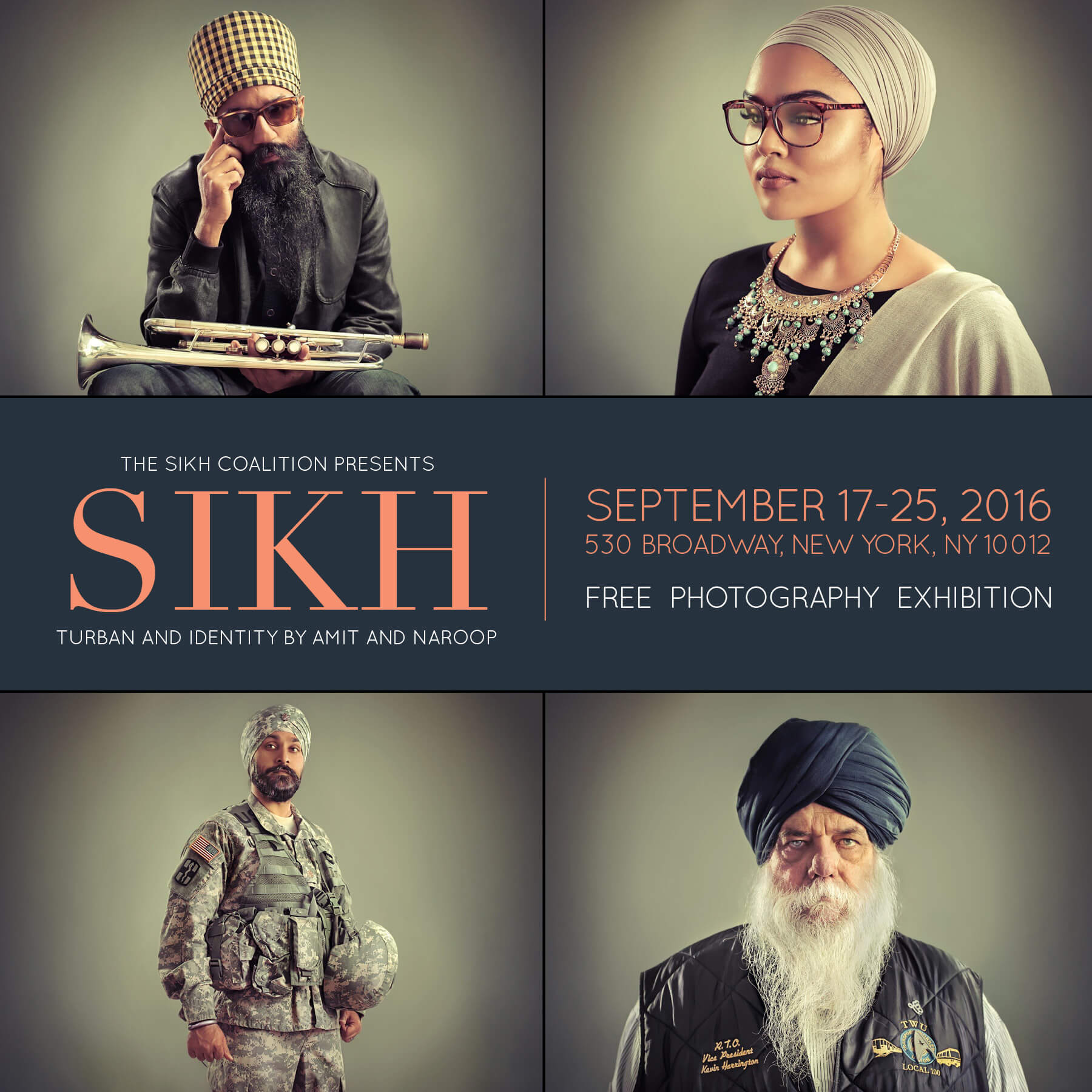

[Image information, from top: Sonny Singh, photograph by Amit and Naroop, courtesy Amit and Naroop and the Sikh Coalition; subjects in The Sikh Project, photograph by Amit and Naroop, courtesy photograph by Amit and Naroop, courtesy Amit and Naroop and the Sikh Coalition; Amit and Naroop photographing actor and designer Waris Ahluwalia for The Sikh Project, photograph courtesy the Sikh Coalition; Harpreet Kaur, photograph by Amit and Naroop, courtesy Amit and Naroop and the Sikh Coalition; Sonny Singh, photograph by Amit and Naroop, courtesy Amit and Naroop and the Sikh Coalition; poster for The Sikh Project, courtesy the Sikh Coalition.]
You can find the Sikh Coalition at these links on Facebook, Twitter and Instagram. Their official website is www.sikhcoalition.org.
Paul D’Agostino is @postuccio on Instagram and Twitter.
You might also like 















